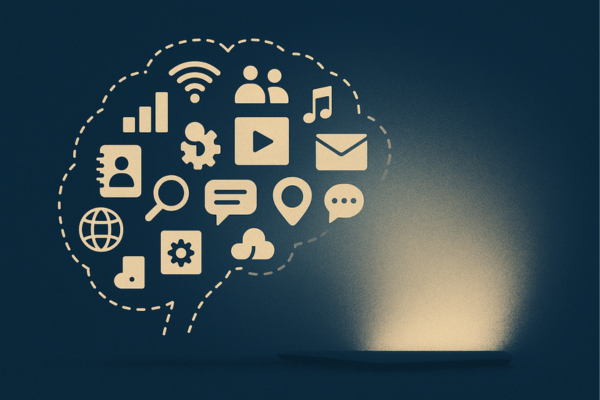
Yesterday afternoon, I was busy marking student assignments to make sure that I met the end-of-week deadline. To mark each assignment, I need several browser tabs open – the student’s work, the assignment brief, the marking scheme, the spreadsheet of marks, and the module guide. But I also needed my email open to deal with an ongoing issue. That was just in one browser window. I had another browser window open with seven tabs on that as well. Oh, and Microsoft Teams was busy sending me messages. It was a long day, filled with a lot of work, when I suddenly noticed something. There I was just staring at the screen, doing nothing, just staring blankly, almost out of focus. I wasn’t tired, but I realised that I was “digitally exhausted”.
You know that feeling. You’ve been “busy” all day but can’t quite recall what you actually did. You’ve clicked, scrolled, replied, forwarded, and toggled so much that your brain feels like it’s been through a spin cycle. So, I thought I would take a rest from working and just spend a short time reading to switch my mind off my concentrated effort.
I turned to my list of items to read, and it was as though the planets had aligned. At the top of the list was an article from Harvard Business Review entitled “8 Simple Rules for Beating Digital Exhaustion.” It’s a good read. But let’s be honest. If I need eight rules just to survive the digital day, I’ve probably already lost the plot.
Digital exhaustion isn’t about how many hours we work online. It’s about how many pieces of ourselves we scatter across the day. Every notification, every switch of focus, every “quick check” steals a fragment of our attention.
One of the sneakiest aspects of digital life is that it feels productive. Much of our digital “work” is an illusion. You’re replying to people, liking posts, joining meetings, sharing updates or sorting out emails. But is it productive? It seems like work, but it isn’t. It is just shuffling pixels around on the screen,
We know that multitasking and digital overload make us less effective, yet we continue to do it. Why? Because every ping is a dopamine hit. Each new message or update gives us the illusion of importance. Someone, somewhere, wants your attention! That tiny thrill keeps us coming back. Before long, we’re caught in a loop of self-inflicted distraction, which we call “work.” And that’s the trap: we confuse stimulation with accomplishment.
You don’t beat digital exhaustion by running away from technology. We live in a digital world, so we have to learn to cope with it. When you suffer from “digital exhaustion”, it’s a signal that you have been lured into the illusion of work and the technology is in charge.
So, what can we do to make things better? One approach to consider is working in themes rather than tasks. Group similar kinds of digital work together instead of flicking between everything. Batch similar work together, rather than taking each item through from start to finish. This might mean, for instance, drafting all your reports in one go. Then design them all together in a separate session. This can be more digitally restful than creating each report individually from start to finish.
Digital exhaustion is a symptom of a deeper problem: we’ve blurred the lines between work itself, productivity and our own availability. It means constant task switching, and that is a cognitive killer. It is making us less effective, yet that dopamine hit convinces us we are being productive at work. It is time for us to take charge of the machines…!
